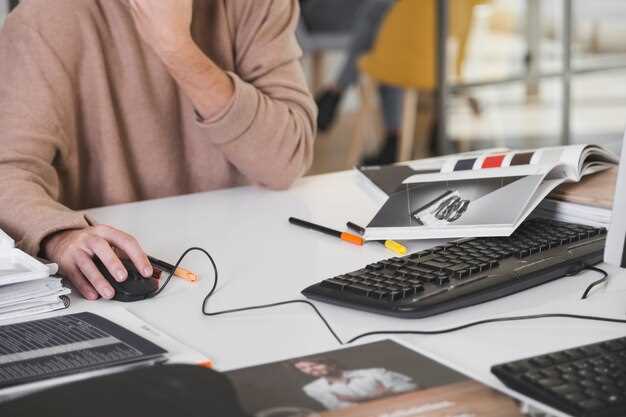
In the digital age, showcasing your skills through an online portfolio has become essential for professionals in various fields, especially in photography. For photographers, the ability to create custom builds that reflect their unique style and vision is crucial. A thoughtfully designed portfolio not only highlights one’s best work but also tells a story that resonates with potential clients.
Creating a custom build for your photography portfolio requires careful consideration of both aesthetics and functionality. It’s important to choose a layout that complements your artistic style while ensuring that the user experience remains seamless. This entails selecting the right images, arranging them thoughtfully, and incorporating elements that enhance the overall presentation.
Additionally, the integration of custom builds allows photographers to stand out in a competitive market. By personalizing the portfolio to reflect specific themes or techniques, photographers can attract the right audience. This customization is not simply about displaying photos; it’s about curating a visual experience that captivates viewers and engages them with the artist’s narrative.
Choosing the Right Photography Gear for Custom Builds

When embarking on custom builds for online portfolios, selecting the appropriate photography gear is essential to highlight your work effectively. Every build demands a unique approach, and the right equipment can elevate your final results significantly.
Camera Selection is the cornerstone of any photography gear lineup. Choose a camera that suits your skill level and the intricacies of your builds. DSLRs and mirrorless cameras are highly recommended for their versatility and image quality. A full-frame sensor can capture fine details, making it ideal for showcasing intricate custom builds.
Lens Choice also plays a pivotal role in how your builds are presented. A prime lens with a wide aperture is excellent for achieving sharp focus and beautiful bokeh, emphasizing the subject. Meanwhile, a versatile zoom lens allows for flexibility in different shooting scenarios, making it easier to adapt to varying environments and lighting conditions.
Tripods and Stabilization are critical for achieving sharp, well-composed images. A sturdy tripod will enable long exposure shots and reduce camera shake, essential for capturing detailed images of custom builds in low-light situations. Investing in a gimbal or stabilizer can also enhance video quality, providing smooth movement when documenting builds in progress.
Lighting Equipment can transform an ordinary shot into a striking visual. Natural light is optimal, but it can be unpredictable. Incorporating softboxes or LED panels ensures consistent, flattering illumination, which is crucial for highlighting the textures and colors of your builds. Consider using reflectors to bounce light and fill in shadows, giving a polished look to your portfolio images.
Accessory Gear such as remote shutters, memory cards, and portable storage solutions should not be overlooked. A remote shutter will allow you to take pictures without camera shake, while high-capacity memory cards ensure you don’t miss a moment during extensive shoots. Additionally, having backup storage is vital to safeguard your work.
Understanding how each piece of gear contributes to your photography can significantly impact the quality of your custom builds. Prioritize versatility, quality, and your specific needs to create stunning visuals that effectively showcase your portfolio.
Techniques for Showcasing Unique Custom Builds

Showcasing unique custom builds effectively requires a blend of creativity and technical skill, especially in the realm of photography. One of the most powerful techniques is to utilize natural lighting. Shooting in diffused, natural light allows for the true colors and details of the custom build to shine, enhancing visual appeal without the harsh shadows often created by artificial lights.
Incorporating various angles is crucial to highlight the unique features of the build. A series of close-up shots can capture intricate details, while wider shots provide context in terms of size and environment. This approach not only displays the craftsmanship but also immerses the viewer in the experience of the custom design.
Using props and backgrounds that do not distract from the custom build can elevate the overall presentation. Carefully chosen materials or settings can complement the design, allowing the custom elements to take center stage. Additionally, consider themed shoots that resonate with the concept of the build, adding narrative depth.
Creating a story around the custom build can significantly enhance viewer engagement. Including captions that describe the inspiration, materials used, and the creation process gives potential clients a deeper understanding and appreciation of the work. This storytelling element can be enhanced through blog posts or descriptions accompanying the photographs.
Finally, utilizing social media platforms to share high-quality photography of the custom builds can broaden reach and audience engagement. Tailoring the content for each platform–such as Instagram’s visual focus or Facebook’s long-form posts–ensures the builds are presented in the most engaging manner possible, enhancing the likelihood of shares and interactions.
Integrating Custom Builds into a Cohesive Online Portfolio
Creating a standout online portfolio requires more than just showcasing your best work; it involves integrating custom builds that reflect your personal style and expertise in photography. Custom builds can significantly enhance the user experience by providing a tailored interface that highlights your unique perspective and technical skills.
When incorporating custom elements into your online portfolio, focus on the overall aesthetic and functionality. Consider using curated galleries that showcase specific themes or genres of photography, such as portraiture or landscapes. These galleries can be designed to ensure a seamless flow, guiding visitors through your portfolio while reflecting your artistic vision.
In addition to visual organization, utilize custom layouts to present your projects more dynamically. For instance, employing grid structures or full-screen formats can create visual interest and keep viewers engaged. A cohesive color palette and typography will further unify your portfolio, allowing the photographs themselves to shine without distraction.
Moreover, interactivity can elevate the user experience. Integrate features such as hover effects or clickable elements that reveal behind-the-scenes insights or additional narratives related to your photography projects. This not only adds depth to your portfolio but also invites viewers to connect with your work on a more personal level.
Lastly, ensure that your custom builds are responsive and optimized for various devices. Modern audiences access portfolios across smartphones, tablets, and desktops, so a responsive design will guarantee that your photography is showcased beautifully regardless of the platform. By thoughtfully integrating these custom elements, you can create a cohesive online portfolio that truly represents your passion and professionalism in photography.





